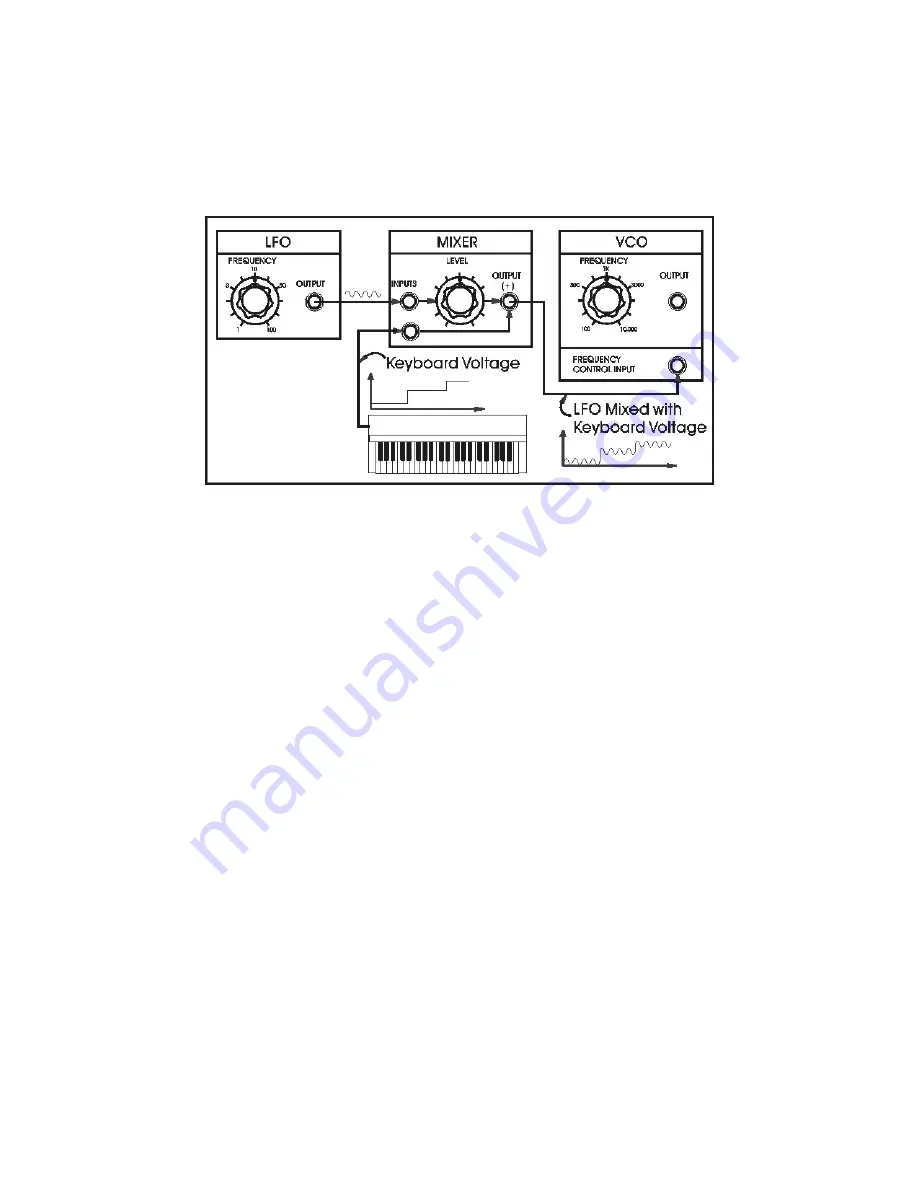
5
applied to the VCO's pitch control input. The mixer in Figure 3 contains a circle with a
"+" in it. This is a way of showing that the two input signals are combined, or added
together. The player adjusts the LFO Frequency (sometimes called Rate) knob to
change the vibrato rate, the Mixer Input Level control to change the amount of vibrato,
and the VCO Frequency control to transpose the pitch range of the keyboard.
Figure 3 - Using a mixer circuit to combine LFO and KEYBOARD control signals. Output of VCO is a series of pitches with
vibrato.
Varying the frequency of an oscillator is just one way to control a module's operation
by means of an externally-applied control voltage. Some other ways are: varying the
gain of a voltage-controlled amplifier (VCA), varying the cutoff frequency of a voltage-
controlled filter (VCF), and varying the attack and decay times of a voltage-controlled
envelope generator (VCEG). In the case of moogerfooger MF-Series Analog Effects
Modules, all performance parameters are voltage-controllable by expression pedals or
externally-applied control voltages.
A wide assortment of signal sources may be used as control voltages. In addition to
LFO's and analog keyboards, commonly-used sources include envelope generators,
envelope followers, sample-and-hold circuits, expression pedals, and MIDI-to-CV
converters. In fact, virtually any source of variable voltage may be used as a control
voltage, including custom-made and homemade control interfaces.






































